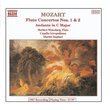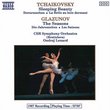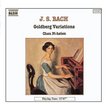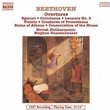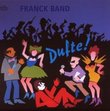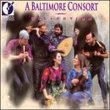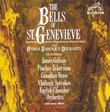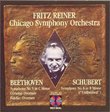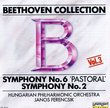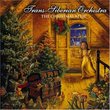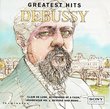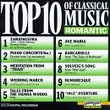| All Artists: Leo Delibes, Ondrej Lenard, Slovak Radio Symphony Orchestra (Bratislava), Slovak Radio Symphony Orchestra Bratislava Title: The Best of French Ballet Members Wishing: 0 Total Copies: 0 Label: Naxos Release Date: 12/1/1992 Genre: Classical Styles: Opera & Classical Vocal, Ballets & Dances, Ballets Number of Discs: 1 SwapaCD Credits: 1 UPC: 730099508025 |
Search - Leo Delibes, Ondrej Lenard, Slovak Radio Symphony Orchestra (Bratislava) :: The Best of French Ballet
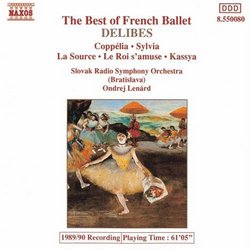 | Leo Delibes, Ondrej Lenard, Slovak Radio Symphony Orchestra (Bratislava) The Best of French Ballet Genre: Classical
|
Larger Image |
CD DetailsSimilar CDs
Similarly Requested CDs
|
CD ReviewsLe roi s'amuse: reason enough to own this CD ATP | Santa Monica, CA United States | 04/09/2002 (5 out of 5 stars) "The music from "Le Roi S'Amuse" is reason enough to own this CD. While they imitate older musical forms (much like Respighi's "Ancient Airs and Dances"), these seven tracks also exhibit the virtues of Delibes' more familiar ballet music: tuneful, elegant, and eminently danceable. The music from La Source is such a tiny sample, it's almost a tease. But the Coppelia tracks capture the highlights of that ballet. While I prefer recordings of the complete ballet, there's no denying that Ondrej Lenard coaxes very spirited renditions from his orchestra. The "Music of the Automata and Waltz" has a music-box quality that is very charming, and the Czardas is strong and resonant without being exaggerated. To those interested in ballet and unfamiliar with Delibes - whose work set a new standard in ballet and inspired Tchaikovsky - this CD is a wonderful introduction. But even if you already have Coppelia in your collection, this CD is worthwhile because of "Le Roi S'Amuse."" Infectious Mood, Glorious Tunes Leslie Richford | Selsingen, Lower Saxony | 09/04/2004 (4 out of 5 stars) "Before purchasing this CD I had never heard of Léo Délibes (1836 -1891), and it is a measure of the confidence I had (and still have) in Naxos that I bought the disc anyway. And I was not disappointed. I suppose you could in one sense say that ballet music without the visual experience of the ballet is like using toothpaste when you don't have any teeth; but the music on this disc tastes so good that it's really worth listening to anyway. Délibes was obviously a master of this genre, and here on this CD there are gathered some of his best tunes in his wonderfully varied and rich orchestrations. This is a hum-along, foot-tapping job, but with plenty of musical detail to keep one's mind busy, too. The "Airs de danse dans le style ancien" from the play "Le Roi s'amuse" have kept me fascinated ever since I first heard the disc: they don't sound in the least like the French music of a century or two earlier, but still they manage to evoke a bygone age. And the brief extracts from Coppélia, Sylvia, La Source and Kassya all contain delightful material that is certainly more than just a backdrop for a troupe of ballet dancers.
The Slovak Radio Symphony Orchestra under Ondrej Lénard seems to have greatly enjoyed making the disc (at three recording sessions in 1988 and 1989). The musicians go at it with great gusto, and the mood is quite infectious. If I fail to award this disc five stars, then it is for the following reasons: 1. The recorded sound, although adequate, is not at all top-notch. A fellow Amazonite has described the early Naxos sound as "cavernous". I'm not sure that's the word I would choose, but at all events you have to imagine the microphones as being placed quite well away from the orchestra so as to capture the entirety of the sound better than the detail. Naxos does not manipulate its sound, which is positive, but the dynamic differences between the very loud passages and the quieter ones often mean that as a listener one feels that the more piano passages are not loud enough; if you turn the volume up, you get your ears blasted when the whole orchestra comes into play. 2. Connected with this is my feeling that the percussion could, in some instances, have been amplified: crashing cymbals should crash, but these sound almost as though they are behind the stage and not on it. 3. The documentation is, again, adequate, but I found the description of the plot of Coppélia confusing. Some more information about the music itself would also have been welcome but was not forthcoming. Note added on 20 October 2005: It is perhaps a measure of the success of the Naxos disc that it motivated me to purchase the entire Coppélia ballet on DVD (in the historically accurate and wonderfully-produced performance of the Royal Opera House, Covent Garden, on BBC Opus Arte). What a superb piece of entertainment this is!" |

 Track Listings (21) - Disc #1
Track Listings (21) - Disc #1